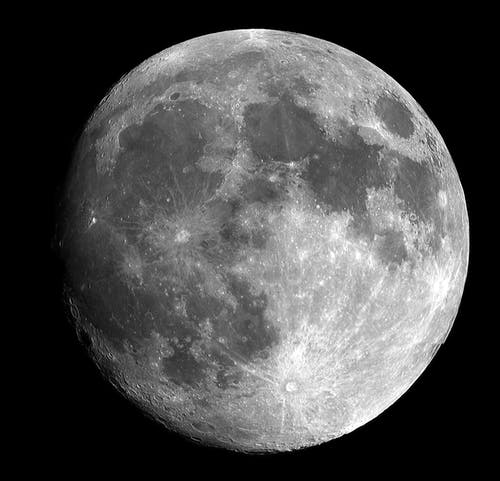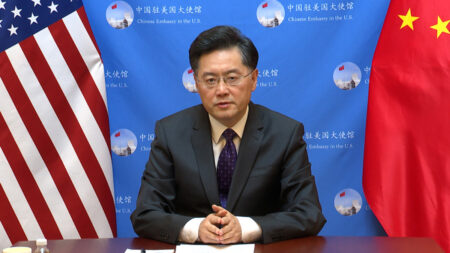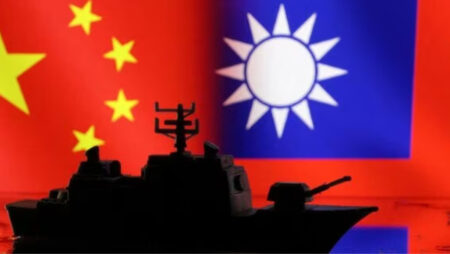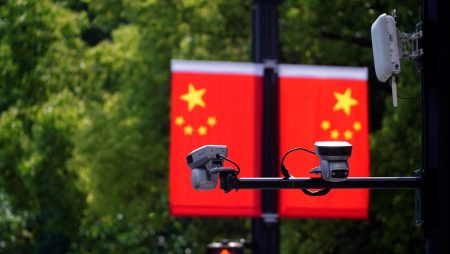
NASA is a space agency of the US federal government, in the same way China has China National Space Administration (CNSA) for space exploration. Liu Jizhong, an official with the China Lunar Exploration and Space Program Center, said that China’s national space administration has received approval to send three orbiters to the moon as a part of the Chang’e Lunar Program.
China said it discovered a new lunar mineral, via samples retrieved by its Chang’e-5 mission, after which the announcement was made that China plans more moon missions after this new discovery. The new lunar mineral found is named Changesite- (Y). It is a kind of colorless transparent columnar crystal which was described by the state-run Xinhua news agency. It is said to contain helium- 3, an isotype that’s been speculated as a future energy resource. This new mineral has been certified by the International Mineralogical Association (IMA).
It was discovered by scientists at the Beijing Research Institute of Uranium Geology (BRIUG), which is the sixth new lunar mineral known so far. It makes China the third country in the world to have found a new lunar mineral, showing a significant scientific achievement made by the country in the field of space science.
Changesite- (Y) is a new kind of phosphate mineral found in lunar basalt grains. The research team at BRUIG isolated a single crystalline particle of it with a diameter of about 10 microns and successfully analysed it’s crystal structure and confirmed it as a new mineral.
China has for the first time also determined the concentration of Helium- 3, a future fusion energy source, from Chang’e-5 lunar soil samples and its extraction parameters. This is a major research finding as it provides fundamental scientific data for lunar resource evaluation and exploration.
Along with this, the morphological characteristics of lunar soil particles have been identified through extensive studies, which is again a major research finding as it provides the scientific basis for studying how the lunar soil was formed.
Lunar samples are considered important as they may unveil when and how the process of cooling-down happened, and as well something about the future of our home Earth. Also, those samples hold secrets of the sun. Unlike Earth with its protective magnetic field, the moon has been exposed to the bombardment of the solar wind. So, particles ejected from the sun will be buried in different layers of lunar soil.
The US Apollo 11 mission was the first to bring samples from another planet back to Earth in July 1969, with about 49 pounds of material from the moon’s surface, but now the discovery may put more pressure on the US to ramp up its efforts after its Artemis I moon mission was postponed for a second time.
China has sent probes to the moon, built its own space station and set its sights on Mars in recent years. NASA, on the other hand, has a rover on Mars and is seeking to put astronauts on
ASA is a space agency of the US federal government, in the same way China has China National Space Administration (CNSA) for space exploration. Liu Jizhong, an official with the China Lunar Exploration and Space Program Center, said that China’s national space administration has received approval to send three orbiters to the moon as a part of the Chang’e Lunar Program.
China said it discovered a new lunar mineral, via samples retrieved by its Chang’e-5 mission, after which the announcement was made that China plans more moon missions after this new discovery. The new lunar mineral found is named Changesite- (Y). It is a kind of colorless transparent columnar crystal which was described by the state-run Xinhua news agency. It is said to contain helium- 3, an isotype that’s been speculated as a future energy resource. This new mineral has been certified by the International Mineralogical Association (IMA).
It was discovered by scientists at the Beijing Research Institute of Uranium Geology (BRIUG), which is the sixth new lunar mineral known so far. It makes China the third country in the world to have found a new lunar mineral, showing a significant scientific achievement made by the country in the field of space science.
Changesite- (Y) is a new kind of phosphate mineral found in lunar basalt grains. The research team at BRUIG isolated a single crystalline particle of it with a diameter of about 10 microns and successfully analysed it’s crystal structure and confirmed it as a new mineral.
China has for the first time also determined the concentration of Helium- 3, a future fusion energy source, from Chang’e-5 lunar soil samples and its extraction parameters. This is a major research finding as it provides fundamental scientific data for lunar resource evaluation and exploration.
Along with this, the morphological characteristics of lunar soil particles have been identified through extensive studies, which is again a major research finding as it provides the scientific basis for studying how the lunar soil was formed.
Lunar samples are considered important as they may unveil when and how the process of cooling-down happened, and as well something about the future of our home Earth. Also, those samples hold secrets of the sun. Unlike Earth with its protective magnetic field, the moon has been exposed to the bombardment of the solar wind. So, particles ejected from the sun will be buried in different layers of lunar soil.
The US Apollo 11 mission was the first to bring samples from another planet back to Earth in July 1969, with about 49 pounds of material from the moon’s surface, but now the discovery may put more pressure on the US to ramp up its efforts after its Artemis I moon mission was postponed for a second time.
China has sent probes to the moon, built its own space station and set its sights on Mars in recent years. NASA, on the other hand, has a rover on Mars and is seeking to put astronauts on the moon again this decade. Such plans show that China is in direct competition with the US. Both countries are eyeing the minerals present on the moon, making space mining the next source of tension.
China and Russia have signed an agreement on cooperative lunar and deep space exploration in November 2017. The agreement includes six sectors, covering lunar and deep space, joint spacecraft development, space electronics, earth remote sensing data and space debris monitoring. Russia may also look to develop closer ties with China in human spaceflight, and even shift its human spaceflight cooperation from the US to China and build a crewed lunar lander.
China’s lunar exploration program , also known as the Chang’e Project after the Chinese moon goddess Chang’e, is an ongoing series of robotic moon missions by the CNSA which was found in 2004 and launched its first spacecraft three years after its establishment. The Chang’e program has recently been focused on collecting samples from the lunar surface. The program will target the south pole of the moon as the scientists think that it will be the best place to find water. NASA, having the same goal, is also aiming for that part of the moon.
The Chinese lunar exploration program is divided into four main operational phases; phase 1: orbital missions, phase 2: soft landers/ rovers and phase 3: sample return, with each mission serving as a technology demonstrator in preparation for future missions. After the ‘3 steps’ phase is done, the phase for development of an autonomous lunar research station near the moon’s south pole will commence. Liu, the government official, recently said that China aims to eventually build a moon-based international research station.













